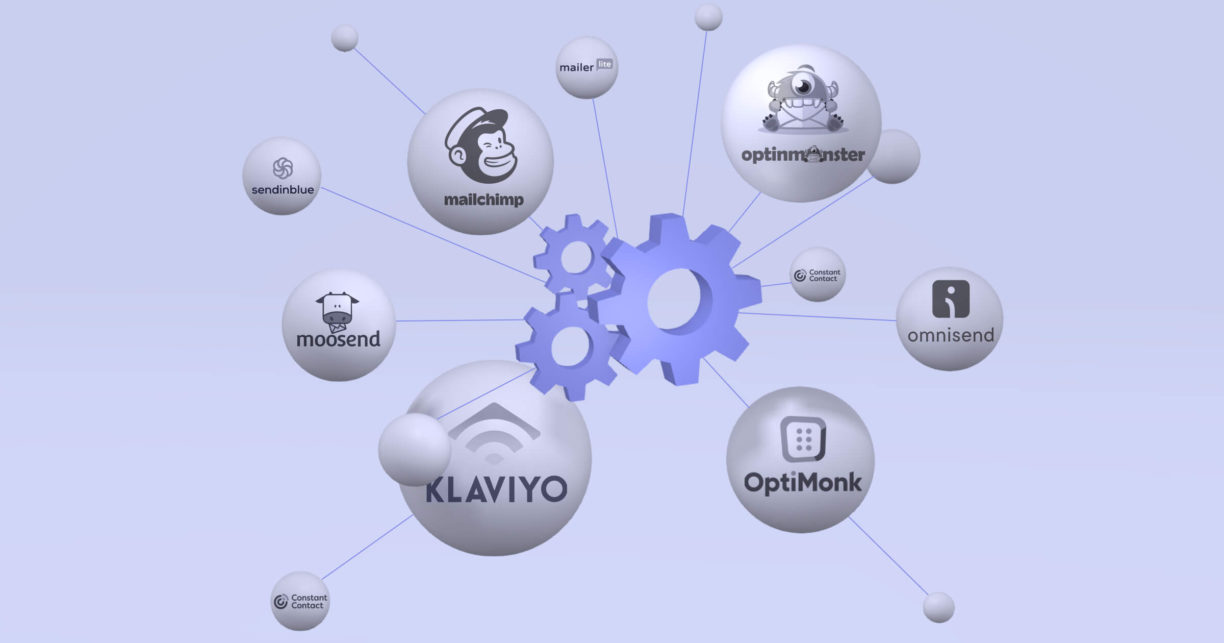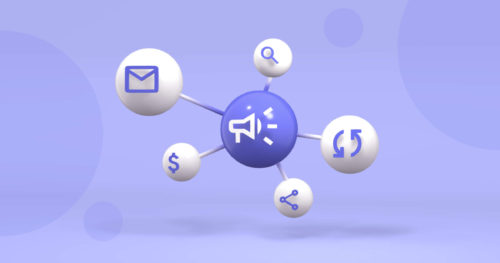Businesses in competitive industries always struggle with one central question: should we focus on creating a better product or developing a better marketing strategy? The answer to this question is both. If you have a great product, but your customers don’t know about it – you won’t be able to sell it. Equally important is an efficient marketing strategy that helps you connect with customers – whether you want to attract new ones or retain the ones you currently have.
With the evolution of technology, we should ask ourselves another callous question – are our marketing efforts up to the standard, and do we need to step up our game?
Luckily, we have a “secret” weapon – automation tools. But many companies use a marketing automation solution and still don’t see results the results they like – new leads, more existing customers achieved with higher retention rates, etc.
In this article, we’ll provide you with 11 marketing automation best practices from our own experience that will also affect the performance of your sales team. We will also see what automation in marketing is and give you examples so you can better understand it.
P.S. Some of these tips are not directly related to automation of your marketing processes but are proven to work.
1. Hire Professional Analysts
Many marketers use traditional methods even though they’ve proven inefficient. They waste time, money, and resources on old-school techniques rather than fully using their software to improve the efficiency of their entire marketing team.
If you are in business long enough, you know that some people are just too stubborn to accept that we live in 2022. It’d be best to hire professional analysts who can read data sheets and optimize marketing campaigns.
2. Learn from Your Audience
When you think of automation, you think of mindless campaigns rolled out daily. But once you start getting to know how is your target customer, the picture will become clear.
The key is to make sure you’re creating targeted campaigns with your audience in mind. Without your audience, nothing else matters.
Start by building buyer personas. You need to know who likes your product and then create landing pages that will suit their needs. If you know what your ideal clients look like, you can achieve significant results even with limited resources.
3. Give Your Leads Attention
The lead capture stage is crucial for your success as a business person. You need to create compelling content to drive more landing page visits or another target you have set.
I am currently seeing a negative trend – marketers are either going all-in to retain their existing customers or push the boundaries to make new clients. Either way, you lose eventually.
The buyer’s journey is long, and you don’t have to rush things. Instead, try to create engaging content and easy-to-fill forms so that your customers can receive something from you frequently.
4. Categorize Your Leads
Categorizing leads is a way to send the right message at the right time. It’s also the most optimal way to nurture potential customers through the sales funnel – and it can also facilitate a positive impact on your website.
Grouping leads adds more value to your website, encourages users to engage with your content and click through to other pages, and, ultimately, improves conversion rates.
Let’s see the expected standard for qualifying leads:
Stage 1: Known Leads
The first lead stage is to get to know your clients. Everyone who enters your store isn’t a customer. To reach out to them individually, you need to make sure you’re capturing their information – either through an e-commerce form on your website or through a clipboard at a trade show booth.
Stage 2: Engaged Leads
If you have your customer’s interest, they might become engaged leads. But still, you need additional profiling to ensure they are potential buyers, as you still don’t know if you have a potential customer or a competitor doing market research.
Stage 3: Marketing Qualified Leads (MQL)
A marketing qualified lead is typically generated through advertising efforts, and passes the marketing department’s criteria for further engagement with the brand. MQLs are considered to be more qualified than leads generated through non-marketing efforts.
You’re much more likely to convert those leads into sales at this stage. Still, nothing is 100% sure.
Stage 4: Sales Qualified Leads (SQL)
Qualified leads come with their own timeline, so it’s important to quickly move into a sales funnel. Because these prospects have already indicated they’re willing to buy, they’re the perfect candidates for moving into your funnel and scoring a sale.
Like the launch of a product or service, an exciting event can even help these leads meet their significant milestones.
You need one or two sales out of ten qualified leads to make your marketing campaigns worthwhile.
5. Ask for Feedback
Automated surveys are the best way to grab your customers’ attention and ask for feedback. This way, you can not only optimize your marketing campaign outcomes, but you can also build a more stable brand with customers who want to be brand ambassadors. A simple anonymous survey can make the difference between a good business and a thriving one.
6. Use Newsletters
One of a successful entrepreneur’s powerful strategies for growing their business is to launch an email newsletter. It’s a simple way to keep in touch with followers, drive them back to your website, and build trust. The key is knowing how to create an email marketing campaign that engages customers, informs them of your latest projects, and builds value.
Of course, it’s not a good idea to send messages every hour. But with the right strategy, you can create a consistent experience for your customers, and after some time, they will start expecting to see more from you, and this is where your sales team has to step up.
7. Diversify Your Efforts
Marketers are often experts in one field. But just because you’re proficient somewhere doesn’t mean you should forget other mediums. Multichannel distribution will maximize efficiency and give you substantial potential exposure.
Email marketing is the natural go-to option in most cases. You can distribute your content to your subscribers. However, you need to identify fake emails to avoid one unpleasant event – your emails being rejected by the mail server.
Social media exposure is another good way to position your brand. Not only can you promote your brand with paid ads, but you can address customers’ pain points and communicate with them. Having a Twitter, Facebook, and Instagram account are “mandatory” for businesses today, while TikTok is gaining traction.
Last but not least – SMS marketing is miraculous. It’s not very common, yet it is a powerful feature that can create urgency and provoke attention.
8. Automate Your Internal Operations
We are talking about marketing automation predominantly. However, you can start by automating your internal processes. This way, you will optimize valuable resources, and you can align your departments to work in a single direction.
9. Hyper-Personalize Your Messages
Hyper-personalization is about making the most of data, analytics, and artificial intelligence to create a super-powered customer experience. It also makes use of machine learning and automation – so that businesses can connect with customers in new ways.
The key here is to use data collected from various sources to create a personal experience for each customer.
This way, you can avoid being called “a spammer” and achieve much better results in the long term.
10. A/B Test Everything
A/B tests are hugely important for ensuring that your marketing is optimized. Testing different channels, messages, button layouts, and even forms can be the difference between conversion and a frustrated customer.
However, this process must be a system: you should always have a hypothesis and test smaller parts of your website or marketing materials.
If you test everything piece by piece, you can collect more customer data, analyze it properly, and channel your efforts in the right direction.
11. Involve Your Team
As good as you become as a marketer, you cannot do everything yourself. Even the simplest email campaigns require at least three people involved:
Graphic Designer – to ensure all visual elements are present, fonts are visible, and there is enough contrast between the background and the CTA button.
Copywriter – to ensure the brand message is clear and the product/service is well represented, even with few words.
Marketer – to analyze the campaign’s results, suggest changes, and deliver the next version.
While websites like Canva are a perfect safe haven for solopreneurs, for any serious business having a solid team will be the backbone of success.
What is Automation in Marketing?
Marketing automation is a powerful technology that streamlines all of your marketing processes and multifunctional marketing campaigns across various channels (email, web, social, and text). You can reach out to customers with automated messages across multiple communication channels with this automated technology.
This all-in-one software contains many tools to help you develop a consistent communication process that offers real-time reporting by capturing and analyzing customer data.
You don’t have to dive into Excel data sheets and essential website statistics. Instead, you can focus on the customer’s journey and let automation work for you.
Example
Probably the most archaic form of automation is email marketing, specifically welcome emails. Many of us have come across great social media ads, which led to a checkout stage. Soon after the order, you receive a message “Thanks for choosing us.” While it looks like a small thing in the eye of the customer, email automation can bring a lot of value.
Such marketing emails have plenty of added value. Let’s see how a simple “Thank you” automated mail can help your business:
It can promote a blog post – instead of spending hundreds of dollars for your content, you can reach a broad target audience for free. There will be no paychecks for backlinks and sponsored ads, as your current customers will be the advocates of your content.
It shows good manners – clients are not dumb. They know how to identify automated emails. But still, they will appreciate that you have thought about them regardless.
It connects business with clients – the old typical sales cycle was oriented towards a single goal: the sale. Later on, marketers realized that the customer journey map doesn’t end with a product sold. It is just the beginning of a long process.
Conclusion
You can’t survive without sophisticated software in the modern age. But knowing how to optimize what you have is just as important as paying for it. If you follow these best practices for marketing automation, you will be a step ahead of your competitors.
And while this is not a guarantee for success, all these strategies have been tried and tested, and they work.
FAQs
What is a marketing automation strategy?
A marketing automation strategy lets you automate how your company interacts with leads, customers, and other interested parties. As a universal solution, it helps you identify prospects, nurtures them into leads, converts them into customers, and automate every step in between.
With automation, you can improve customer service, increase revenue and reduce costs.
How can it be improved?
There are plenty of ways to improve your marketing automation campaigns. However, it would help if you focused on the customer, and you should pay attention to behavioral data and segment your leads according to the profile of your customers.
Hyper-personalization can support your efforts to enhance your results, as you will be one step closer to your customers.
If you are a business owner, you should look for specialists who can analyze data and identify prospective customer segments. Although they are not cheap to hire, they can elevate your sales by times.
What are the key features of a good automation software?
There is a long list of features that each automation software should provide. But let’s pick the five most important ones:
Artificial Intelligence (A.I.) – Machine learning is an absolute must-have tool. It lets your software learn with time and become more precise in identifying targets.
Prospect Activity Tracker – Without proper lead tracking, marketers can feel like shooting in the dark. Automation software makes it easier to track user behavior and sales funnels, which helps to make sure that you know exactly where users are throughout your sales process.
Dynamic Content – Dynamic content is one of the most effective hacks you can use to improve your website. It helps you create content for your website that’s more relevant to your users, making them stick around longer and do what you want them to. Personalizing your site based on user data can help make it more engaging.
Lead Scoring Process – As you gather leads from marketing campaigns, you’ll sort them based on their readiness to buy. Some leads are faster than others at converting, and this is where lead scoring comes in. Scoring your leads lets you see which ones are ready to buy faster and target their attention with highly-targeted messaging.
A/B Testing – A/B testing is an integral part of an effective marketing strategy. It allows you to adjust and personalize content – ultimately helping you achieve a better conversion rate.
How can marketers track consumer buying habits?
Marketers can use these four strategies to track their customers’ buying habits:
Track in-store customer behavior
Study their targets’ social media habits, posts, and interests
Use online tracking to analyze customer behavior
Analyze multi-channel trends and patterns.



